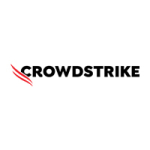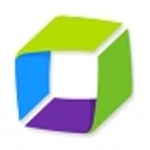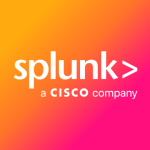I am a system integrator. We have installed it on-premises, on the cloud, in distributed environments, and all other environments for our clients.
We have worked with other solutions, such as LogRhythm and Splunk. Compared to others, IBM QRadar has the best price-performance ratio so that you are able to reserve minimum costs. It starts settling in fast and gets the first results very quickly. It is also very scalable.
There are a lot of things they are working on and a lot of technologies that are not yet there. They should probably work out a better reserve with their ecosystem of business partners and create wider and more in-depth qualities, third-party tools, and add-ons. These things really give immediate business value. For instance, there are many limitations in using SAP, EBS, or Micro-Dynamics. A lot of things that are happening in those platforms could also be monitored and allowed from the cybersecurity risks perspective. IBM might be leaving this gap or empty space for business partners. Some larger organizations might already be doing this.
It would be very nice if IBM can make some artificial intelligence part free of charge for all current QRadar users. This would be a big advantage as compared to other competitors.
There are companies that are going in different directions. Of course, you can't do everything inside QRadar. In general, it might be very good for all players to provide more use cases, especially regarding data protection and leakage prevention. There are some who are already doing some kind of file integrity or gathering some more information from all possible technologies for building anything related to the user and data analysis, content analysis, and management regarding the data protection.
I have been using this solution since 2011.
If the engineers are missing some technical knowledge from IBM documentation, then it might get interesting, but you can always rollback. Usually, when you are implementing innovations, as a system integrator, you usually do less on the test environment, and then you check if this works. If bigger organizations and customers want to do it by themselves, they should really stick to this approach and use a lot of material, community pages, and channels.
There is absolutely no problem with scalability. It works very fine, especially when you are running just clients. It doesn't matter how many variants you have all across the culture. You can practically have different continents. It doesn't matter how many collectors are running. You can easily distribute the current license to multiple users, and all the collectors can upload it without any restrictions.
We have worked with other solutions. Splunk is a long-term trap because it is very expensive, and it gets more and more expensive. It has different times, and it is integrated with different products. When you combine that together with licensing, it obviously fails. You are paying a lot more than QRadar.
LogRhythm has some problems with stability. We were the first partner to do some integrations with LogRhythm, but we had some problems. ArcSight was smaller at the time but not anymore. It is now a competitor. Fortinet is very good for those who are already using some software products from them.
It usually happens within two or three hours, but it also depends on the preparation. If good homework is done, then the initial setup is totally flawless. It is ready very soon. We then try it and wait for maybe a couple of days more. After that, we start fine-tuning, and then we do advanced installations.
For us, such projects usually don't start without any experience with technology and the concepts. When you are buying it, you need to know all the information systems, create a list of tasks and priorities, and understand the use case better.
A lot of such innovations or implementations initially can be done by one person, two persons, or maybe a team of five dedicated administrators who later on will be using this technology or solution. You need to understand that there are different roles of people who are working with cybersecurity and threat management, such as an analyst, a simple technical maintenance performer, an administrator, a user behavior analyst, etc.
It is not something like a next-generation firewall, next-generation intrusion prevention, or the most complex tool that you have got, which you can install and configure and then see if it runs smoothly. It is a completely different story in QRadar or any similar technology. These solutions or technologies have to be managed continuously.
The biggest mistake that innovations people usually make is that they don't plan the total cost of the technology tools for a period of five years, especially because they don't know what kind of new threats are coming out. Despite that, IBM is very early in doing some kind of new content packs and including data enforcement, etc. When new threats are coming in, you effectively need to adjust. The more complex use cases you have, the more complex the responses will be. You might have different systems or you might be working in different time zones.
When buying, people think that 70% to 80% percent of the initial purchase is the total they are going to spend within next year at this time, and then every next year, they will spend like 20% or 25% on the technical support, maintenance, development of the system, etc. When you are talking about a huge, complex, and central cybersecurity threat management system, it is more likely that you are implementing a document management system and some complex CIP systems, etc. The cost of the license and the cost of the hardware initially can make up around 20%, 30%, or less percent of the total budget that is needed for quality management of such solutions for a longer period of time.
Some people think that if they buy this for 100,000 pounds or euros, the next year, they can buy just annual subscriptions for 25,000 or 20,000. You may have some internal costs for the license, etc. If you are buying for, let's say, 100,000, you might have to make your budget for 200,000 more, because it needs to have certain people who are doing everything with the solution. You need to train them and send them to the IBM international technology academies and events such as Visor to know about its management and maintenance. You probably also need to do some certification, so you need to go for a course for implementation. A lot of internal work should be done to adjust the solution with other departments, and those other departments usually don't like such central, overseeing, and controlled solution. They, later on, learn that they can get a lot of different, useful reports out of it without doing additional work.
I would rate IBM QRadar an eight out of ten. Every technology has some weaknesses and strengths. It has a lot of points to improve, but based on everything that we have seen in the market and from other customers, this is, so far, at least in Europe, the best solution.



















